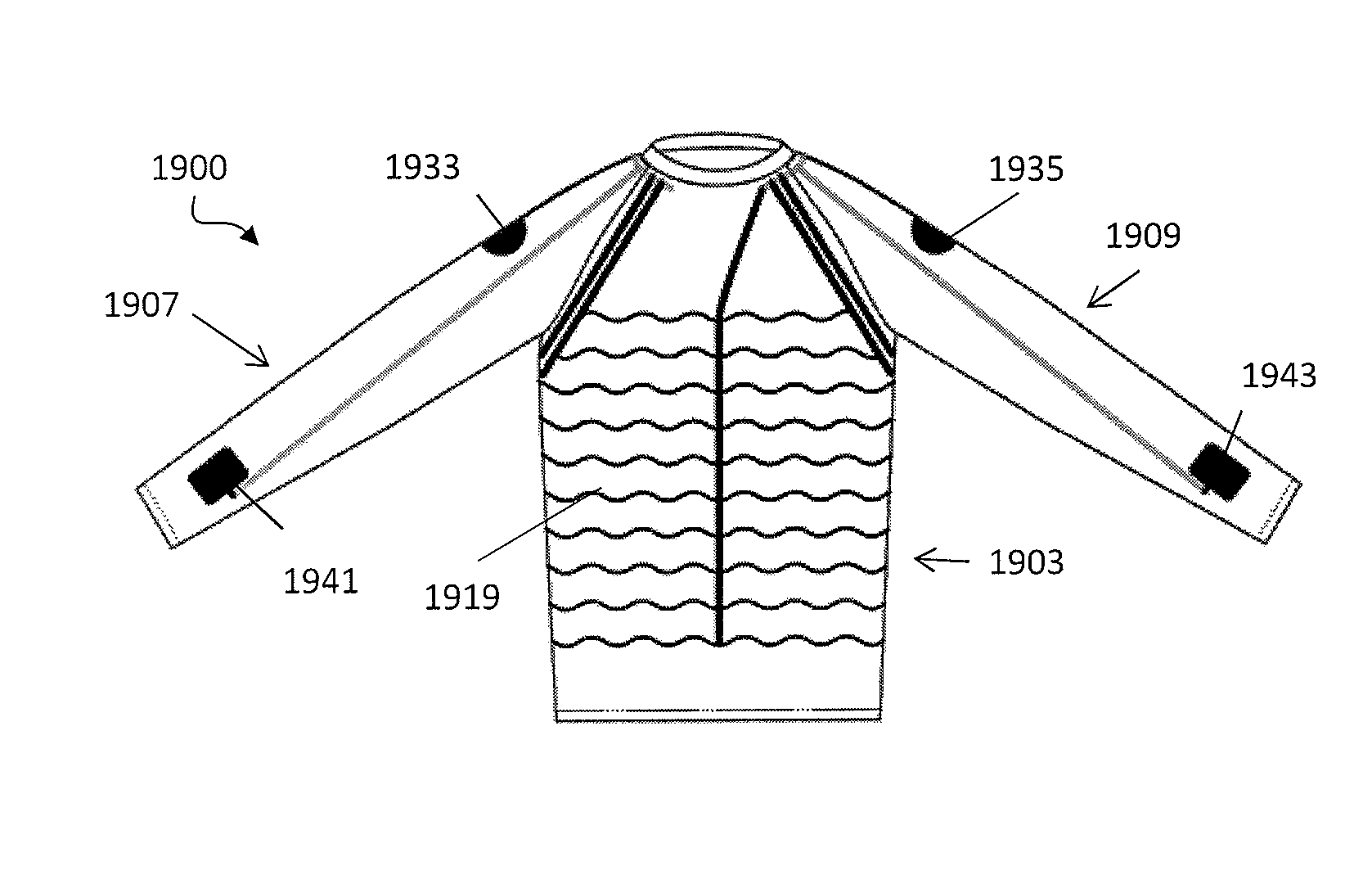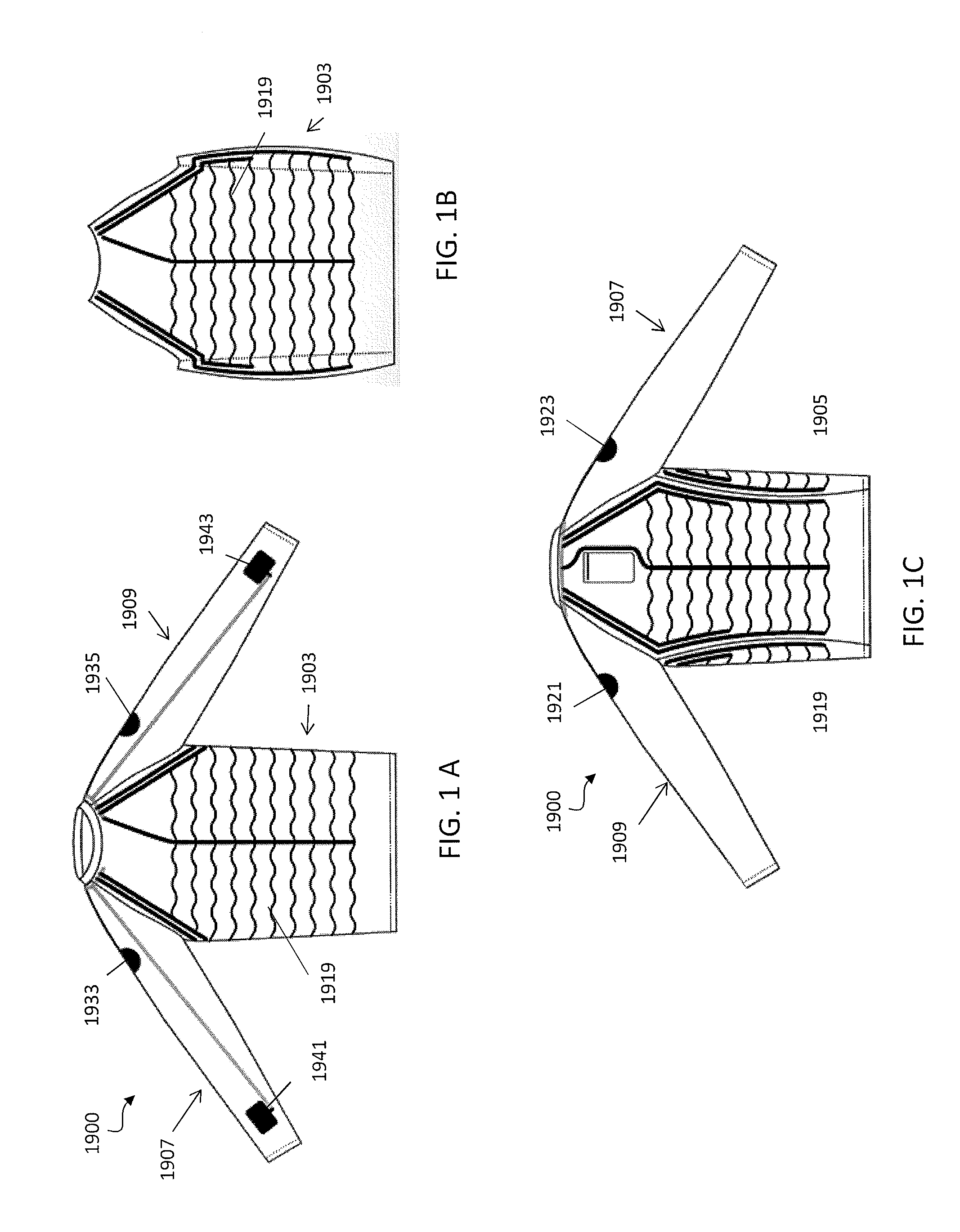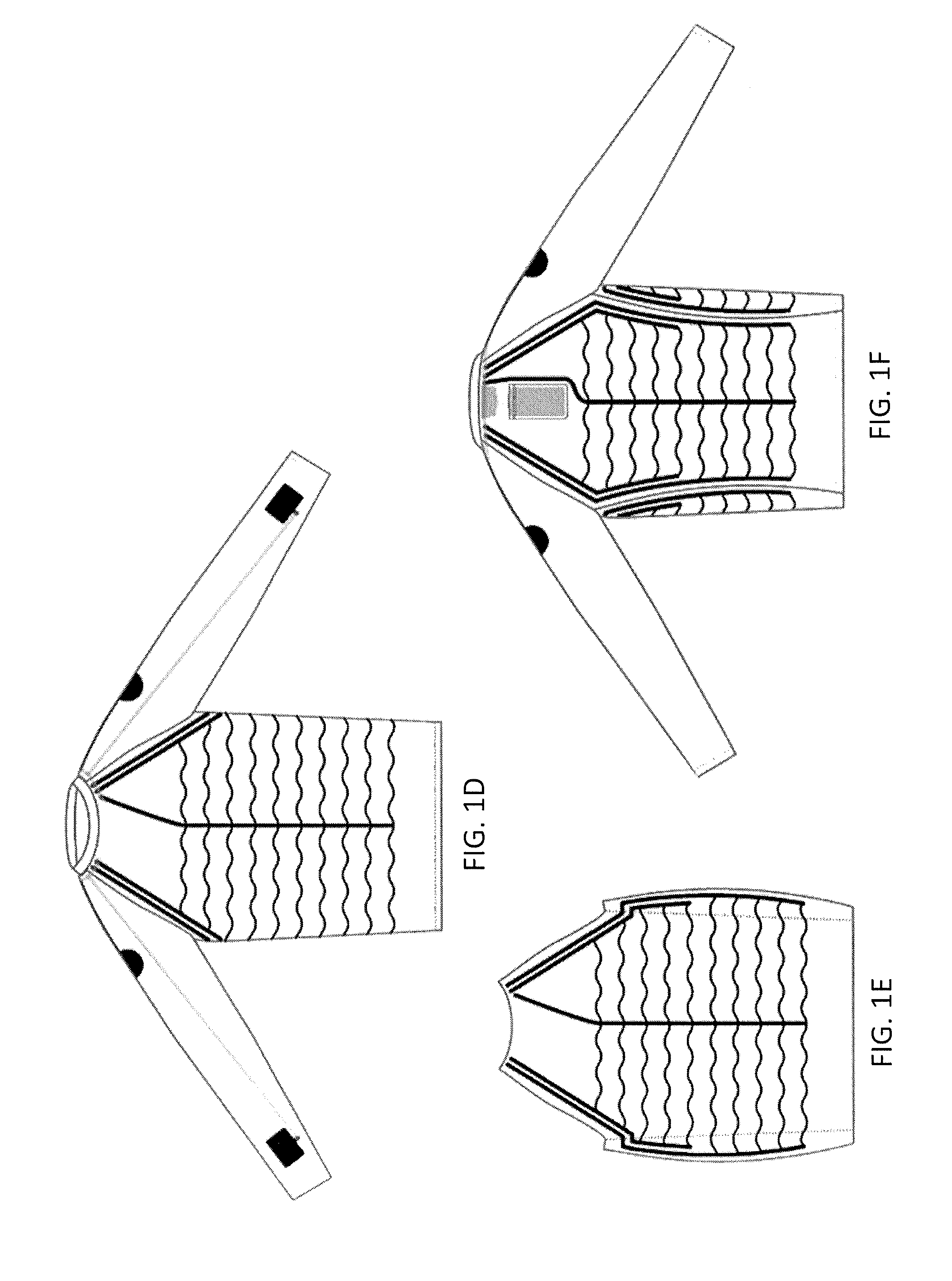Physiological monitoring garments
a technology of physiological monitoring and garments, applied in the direction of force/torque/work measurement apparatus, instruments, applications, etc., can solve the problems of cumbersome and inconvenient use of cardiovascular and other types of health monitoring system, difficult or impractical long-term monitoring use, and relatively inaccurate monitors. achieve the effect of stable and continuous positioning of garments
- Summary
- Abstract
- Description
- Claims
- Application Information
AI Technical Summary
Benefits of technology
Problems solved by technology
Method used
Image
Examples
Embodiment Construction
[0122]In general, described herein are apparatuses (e.g., garments, including but not limited to shirts, pants, and the like) for detecting and monitoring physiological parameters, such as respiration, cardiac parameters, sleep, emotional state, and the like. In particular, described herein are stretchable, conductive sensors and connectors, which may include stretchable conductive inks, elastics, and traces that may be attached (e.g., sewn, glued, etc.) or in some variations printed onto garments, including in particular compression garments, to form sensors, conductive traces, and / or contacts.
[0123]U.S. patent application Ser. No. 14 / 023,830, titled “PHYSIOLOGICAL MONITORING GARMENTS,” and filed on Sep. 11, 2013 (incorporated by reference herein) describes exemplary garments any of which may be modified as described herein.
[0124]Any of the garments described herein may include one or more Sensor Manager System (SMS) placed directly onto the garment (e.g., shirt, shorts or in any o...
PUM
| Property | Measurement | Unit |
|---|---|---|
| pressure | aaaaa | aaaaa |
| pressure | aaaaa | aaaaa |
| thickness | aaaaa | aaaaa |
Abstract
Description
Claims
Application Information
 Login to View More
Login to View More - R&D
- Intellectual Property
- Life Sciences
- Materials
- Tech Scout
- Unparalleled Data Quality
- Higher Quality Content
- 60% Fewer Hallucinations
Browse by: Latest US Patents, China's latest patents, Technical Efficacy Thesaurus, Application Domain, Technology Topic, Popular Technical Reports.
© 2025 PatSnap. All rights reserved.Legal|Privacy policy|Modern Slavery Act Transparency Statement|Sitemap|About US| Contact US: help@patsnap.com



